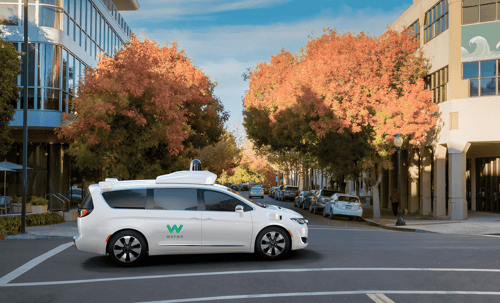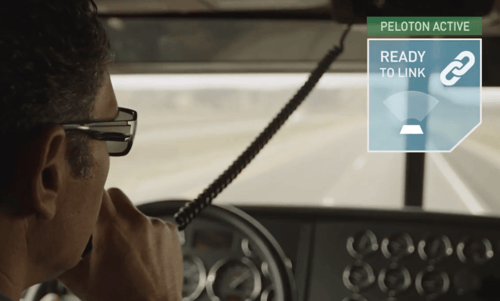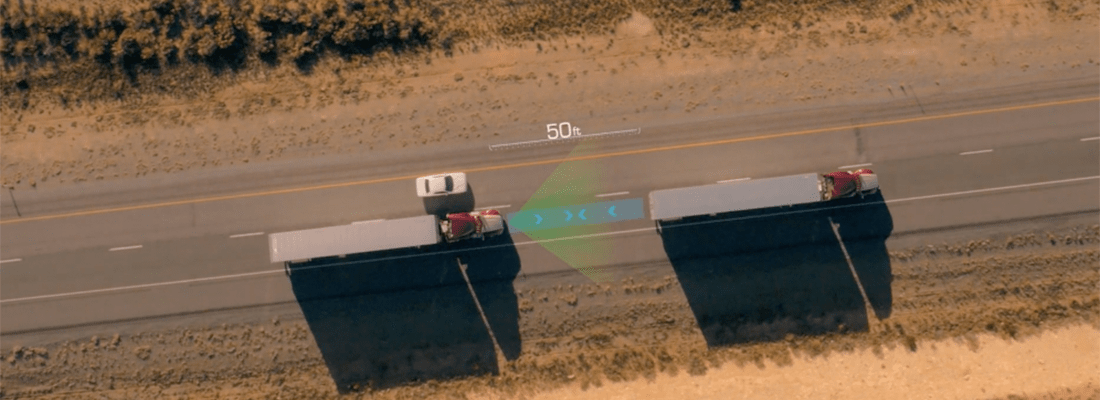Autonomous vehicles 2021: Here to make the world safe
A European transport technology journalist recollected a timely anecdote recently. Having spent the day on the exhibit floor of an ITS show in the US in the mid-2000s she hailed a cab and within a couple of minutes was being quizzed as to what she was doing in the US. She informed the driver that she was attending a trade show on intelligent transportation systems in the hope that that might satisfy his curiosity. It did not. He asked her to give an example of an intelligent transportation system and as it was an entirely relevant example, answered: “driverless taxis”. During the four minutes of awkward silence that ensued, she reporter desperately hoped that the driver wouldn’t realise that what she was saying was, effectively, that the technology she was there to review could see him out of a job within 10 years.
“Let me get this straight,” the driver said, breaking the silence. “In 10 years’ time I’ll be out of a job?” “Well… maybe 20?” she replied, nervously. “Wow,” the driver responded and that was the last thing he said for the remaining 35 minutes of the journey back to her hotel.
Well, here we are in the third decade of the 21st century and only this year have we seen the first robotaxis take to the streets (in the US, not a huge distance from where that story took place). And, if truth be told, the giant strides made by the automated driving sector have, arguably, largely been made in the past five years. So what does the future hold for AVs? We asked this admittedly broad question to three experts: Richard Bishop, founder of Bishop Consulting in Maryland, USA; Ben Winter, programme manager of the UK government’s Centre for Connected & Automated Vehicles (CCAV); and Serge Lambermont, the Dutch-born, South African-based owner of Singaporean AV consultancy Autobotik.
UK’s 15-Year AV Vision
“The potential economic, environmental and social benefits of the technology mean that the market for connected and automated vehicles (CAV) in the UK could be vast,” says Ben Winter. “The UK Government wants the technology to help improve transport across the nation by making everyday journeys greener, safer, more flexible and more reliable. We also want to take advantage of the economic opportunities: the CAV market in the UK could be worth as much as £42 billion (€46 billion) by 2035, capturing around 6% of the £650 billion (€710 billion) global market, and creating approximately 38,000 new jobs.”
The UK Government is proactively shaping the safe and secure emergence of CAV, with the goal of making the UK the best place in the world to develop and deploy the technology while ensuring that all areas of society benefit from its potentially transformative effects.

Image: Waymo
“Led CCAV, a genuinely collaborative approach between Government, industry and academia means that we can help industry invest in technology, while providing a flexible but robust regulatory framework that encourages safety without stifling innovation,” explains Winter.
Another aspect of the UK’s innovative CAV framework is the unrivalled test facilities it offers. “The UK’s Code of Practice for trialling CAV, for example, has allowed companies from around the world to test anywhere in the UK, enabling innovation while a comprehensive and future-proofed regulatory framework is developed.”
The UK is also supporting testing through the Government-backed £200m (€218m) CAM Testbed UK programme. Made up of six globally unique facilities across England, Testbed UK is the only testing ecosystem worldwide with the capability to safely take ideas from concept to development both virtually and physically, all within a 3-hour drive.
Says Winter: “Companies around the world can use these facilities to test their technologies on both private and public roads. Government has also enabled joint public and private investment of £440 million into new CAV since 2015, working with industry to break down the technological and regulatory barriers to deployment.” Working with industry and academia, CCAV is learning from CAM Testbed UK and Government-backed trials.
“This helps to inform gaps in regulation and to provide key evidence to support the development of the Government’s safety and security assurance programme, CAVPASS (CAV Process for Assuring Safety and Security), that aims to develop the world’s first comprehensive safety and security assurance process for CAV.” The work undertaken by CCAV and its partners within Government has already ensured that the UK has a proven track record in leading CAV innovation, as Winter elucidates.
“KPMG’s 2020 Autonomous Vehicles Readiness Index ranked the UK as one of the world’s most advanced markets, leading particularly on policy, legislation, and cyber security. We have a long history of transport innovation, a world-class research base and many established transport technology companies. Meanwhile, a new business starts up in the UK every 75 seconds, and it is home to 5 of the top 10 fastest-growing businesses in Europe as well as 4 of the top 10 Universities in the world. With an ambitious, clear and comprehensive strategy from Government to drive forward a holistic Future of Transport agenda, there has never been a better time to invest in the UK connected and self-driving and vehicle sector.”
Turning points in the autonomous trucking industry
Winter’s enthusiasm is entirely matched by Richard Bishop’s, as evidenced in our feature “The Path to Automated Driving”, an article that crystalises his thoughts on the current state of play in the driverless vehicle sector. However, Richard’s current focus is on sharing his undoubted expertise with the trucking industry, long-thought of as the most viable option for extensive roll-out of autonomous solutions.
“A really important turning point with the truck OEMs was in the last year or so,” he explains. “The startups could buy a truck and hack into them and apply their software to figure out how to do retrofit autonomous tech robustly and that's fine to get started. But the time came when they had to get more and more integrated with the innards of the truck, the electric power system and the brakes and engine, so what's happening now is a much deeper integration between the startups and the old guard coming together.”

Image: Peloton
"The startups could buy a truck, hack into them."
Bishop is clearly excited by the future and looking forward to the fruits of the labours of the newcomers and the OEMs. “They know they need each other to make this happen and we've seen some things in the news with TuSimple working with Navistar and others, Waymo has placed an order with Daimler Trucks to deliver OEM factory-built trucks. The key part of this is there's an infrastructure inside those trucks that is needed for level four autonomy, which is redundancy in the braking and steering plus cooling systems for the electronics and redundancy and electric power, all of that. The startups simply can't do that by themselves - it needs to come from the factory, so we may see some retrofitted driverless trucks in the next year or so. Small numbers, but the general consensus is 2024 is when the factory-built systems will be coming off the production line. And then that'll be another turning point.”
Talking of turning points, Bishop highlights a US point of law that has certainly played a part in certain States agreeing to allow driverless trucks on their freeways and highways?
“It’s an interesting point that Federal regulations are silent on automation and in the US if something is not prohibited then it's permitted at a Federal level. It comes down to the individual States themselves as to how to regulate how a vehicle is used, such as seatbelt wearing and speed limits. In truth it's a bit fuzzy with the States as several proactively said that the automated driving of trucks is fine. Automated driving in general is fine, but a lot of the states are silent.
On the question of whether any States have specifically declared that driverless vehicles are not allowed on their roads, Bishop is unequivocal in his reply. “There's maybe one or two jurisdictions that have said ‘we don't want automated vehicles on our roads’, but generally, that's not the case. We see enough ‘geography’ to launch this. As I said earlier it really starts to matter in 2024, so I think we'll be OK by then in that sense.”
The impact of COVID-19 on autonomous driving
The Coronavirus pandemic has affected the progress of virtually every industry you could care to name, but there have been stories of Covid-19 facilitating breakthroughs and expediting approval processes across the globe. We wanted to know if there had been any instances of seeing the pandemic as an opportunity to drive change.
“Covid-19 has definitely affected the sector,” says Bishop. “It's slowed things down, but in general there's been winners and losers across the use cases. The testing and development process has been slowed down. To test AV technology you need two engineers in the front seats of the vehicle as that is the way you safely test and collect data, and of course that had a Covid problem built into it as they couldn’t sit in the same car anymore. That had to be dealt with. However, simulation is such a core part of development that was able to go forward and I think even accelerate. So there was still progress.”
With the financial climate being adversely affected by the pandemic, there were equally serious repercussions in the investor climate where there was a lot of uncertainty. As the world looks to move out of the grip of the virus, how is the overall picture looking for the autonomous vehicle sector?
“For the companies who happen to be in the position where they’re running low on money, it's time to go raise some new funds. They were in a bad position. But to point to an obvious area, the idea of home delivery with an automated vehicle is really one of the hottest use cases now. However, generally speaking, it's not about public money. The public sector gets very excited about smart cities and that's important within its own world. But if you're a startup and you want to succeed, you cannot have any dependency on the public sector. You can't depend on their money. You can't depend on them to put in infrastructure and so on. There's a regulatory role and a role required in the public sector, depending on the particular use case but it's not about public investment.”
Waiting for the great leap forward
For Autobotik’s Serge Lambermont 2020, despite its unprecedented place in history, has seen autonomous vehicle innovation and development take several giant leaps forward.
“For the AV sector to continue to make progress the one thing you need is time. And that is actually happening now. The other part that's happening is that the performance computer platforms, from the likes of Nvidia and Intel allows all these deep neural networks (DNN) to come in. It's amazing the progress that's being made at the moment, you can feel it, you can actually feel it moving now.”
An African-based European with an Asian-registered business has clearly got his finger on the pulse of the global R&D world, but Lambermont points at China as one of the hottest spots for AV integration.
“China has the opportunity to build new infrastructure, real physical infrastructure that is almost impossible to build in Europe and the US. We can't even make a change to an airport, but in China they can completely replan cities thinking about automated driving. In the larger perspective, they are really thinking about smart city robotics, delivery vehicles, street sweepers, and now they have these autonomous vending machine vehicles. It's a little bit like when the iPhone was released, nobody actually realized what you could do with apps till the iPhone appeared in 2006. I think the idea of a driving vending machine is absolutely fabulous. Let’s say you have used your last print cartridge: on the app you ask for a replacement print cartridge and a small vehicle drives one over to you,” he enthuses. “This is a great example of operational design domain (ODD), a much more controlled environment where innovations such as this are much easier to implement.”
Lambermont is of the opinion that some of the major automotive OEMs have been all-but forced into reacting to pressure to innovate from the arch innovators themselves, Tesla.
“Actually, I think all the OEMs feel the pressure of Tesla, and shadow mode learning. They are all working on that. And that relates to that earlier question. If you're able to have a central computer platform and you can put all your neural networks in that central computer, you could actually learn new features and validate software in the field instead of having these expensive exercises. This is also happening in Europe and the Europeans know that this could be the enabler to accelerated implementation of automated driving technologies.”
“I think all the OEMs feel the pressure of Tesla, and shadow mode learning.”
It’s long-been a point of contention that the vast majority of autonomous vehicles have been designed using the same blueprint as human-driven vehicles with a bonnet and a boot in time-honoured fashion. As Richard Bishop remarked, the advent of startups in the AV sector has introduced a whole new way of thinking about vehicle design, coming into the industry, as they have, with little or no “baggage” as to what a passenger car should look like. This is another facet of AVs that fascinates Lambermont.
“The startups can now build complete vehicles, partly because of the advances in electronic powertrain, but also they are introducing a lot of new technologies that are used by the OEMs. From LIDAR technology to the deep learning technologies to the new radar technologies and 3D radar technologies. So a lot of these technologies are emerging out of startups that are acquired by the OEMs. But it's very interesting that these absolutely fabulous new sensors and software technologies are coming out as a result of these startups’ fresh perspective on what a car should look like. They are building completely new vehicle types, because you can actually assemble it and you can do it without the internal combustion engine. It’s a big step forward and a step forward in the right direction.”
Timeline autonomous vehicle technology
In terms of a timeline for the widespread introduction and integration of autonomous vehicle technologies into what is still in many ways an analogue world, Lambermont believes that fundamental to the public acceptance and take-up of AV tech is that it will be introduced when it's most convenient to do so.
“We started taking Ubers, because it just worked fantastically well. Because you don't even need to make a phone call. You just press a button on your phone and a car arrives to take you to your destination. Technologically speaking that is unstoppable when it's so convenient. For example, if you drove to the airport and parked in a remote spot, with one press of a button on your smartphone app there's suddenly a shuttlebus stopping in front of your car. It takes you to the terminal and it has also remembered where you parked your car so that when you come back, it brings you right back to your parking place. You will use that service because it's superconvenient. That's the enabler.”
“Convenience is the enabler of autonomous vehicles.”
But it isn’t the only enabler, as Lambermont agrees. “We are concerned about the social aspects too. These applications are at their most useful when they tackle tedious tasks, like driving a shuttle at an airport in the middle of the night when there's only a few passengers on board. It doesn’t need a human being to do that. I think everybody understands that we should automate the task of moving elderly people to and from hospital or to and from their retirement/care homes.”
If this year has taught us anything it’s that working together, collaboratively, can bring about variously untold and previously unheralded benefits. Lambermont is quick to point out that collaboration is something very close to his heart.
“This is my dream!” he jumps in, enthusiastically. “I'm actually working on this as a startup called Resemble. When we learn to drive and we pass the test and get our driving license, you can't actually drive. All you can do is follow the traffic rules. We learn how to drive every time we get behind the wheel AFTER we get our licence, for instance when we’re suddenly in a dangerous situation. We remember it, and then in the future we avoid that situation or we at least know how to circumvent it. Humans are extremely good at this. When you overtake a cyclist the distance that you leave them depends on if it is an adult cyclist, if it is a child, if it is windy, if it is icy and that decision is made in a tiny fraction of a second. If autonomous vehicles can learn from these situations then we can accelerate the process of them becoming safer.”
Lambermont concludes with a notion that is undoubtedly shared by the entire autonomous vehicle, and human-driven vehicle sector. “I’ve just described my dream for automated driving, because now you can really use real-world, technical knowledge about what is dangerous in order to make the world safe.”
Share your story
Do you have an innovation, research results or an other interesting topic you would like to share with the professionals in the infrastructure, traffic management, safety, smart mobility and parking industry? The Intertraffic website and social media channels are a great platform to showcase your stories!
Please contact our Sr Brand Marketing Manager Carola Jansen-Young.
Are you an Intertraffic exhibitor?
Make sure you add your latest press releases to your Company Profile in the Exhibitor Portal for free exposure.





